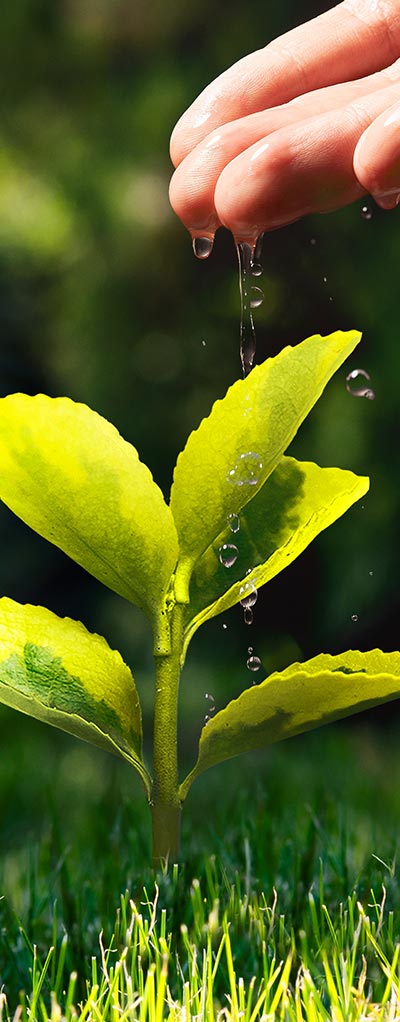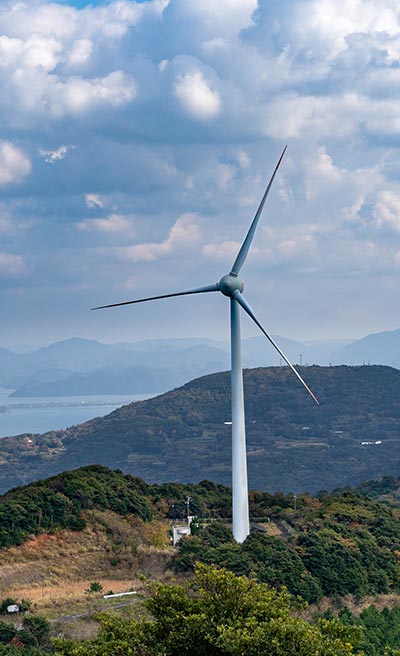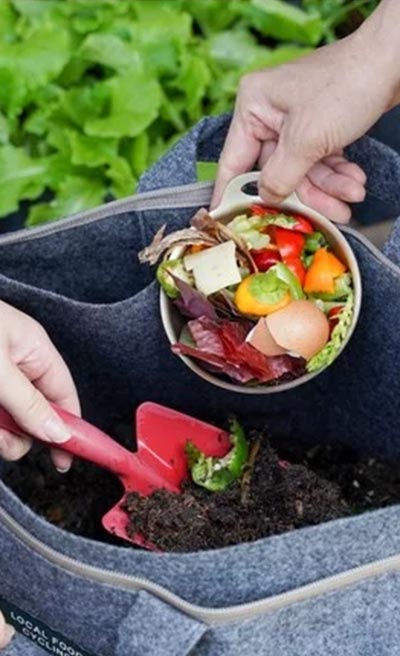
Be a Changemaker
Cut Your Carbon Footprint by 50%
“43%.” It is the advice from IPCC’s 2022 report that we need to cut global carbon emissions by 43% by 2030. Only seven years left to prevent a global disaster unrepairable, requiring paramount commitment from governments, businesses, and individuals.
Unfortunately, refusing plastic bags is just not enough. Not this late in the game.
But it doesn’t mean it’s difficult, much less “impossible.” Because when we look at the list of what we can do, we can quite possibly cut more than half our carbon footprint. So let’s aim to cut our carbon footprint by 50% with these actions!

BE FASHION-WISE
Invest in secondhand clothing instead of new ones
Clothes-making goes through a long, arduous process. There’s harvesting of materials, transporting, processing, transporting, sewing, even more transporting, and finally reaches the stores for you to purchase. Imagine the amount of energy and carbon emissions required.
Now, imagine how buying secondhand clothes require only a fraction of the energy for resale. This makes buying local secondhand clothes a superior alternative in reducing our carbon footprint. Fashion lovers also do not need to worry about expanding their wardrobes.
Unfortunately, it’s extremely difficult to estimate the reduction in carbon emissions, since it varies widely with material type, item type, and manufacturing process.
Japan’s secondhands are often in good quality
In fact, this goes beyond just fashion to include electronics, kitchenware, outdoor goods, furniture, books and many more. There is little sense of resistence to buying secondhands in Japan.
Strong culture of secondhand
Mottainai, a sense of not wanting to waste, is a strong Japanese value. Secondhand clothing markets were common in Japanese history, and it continues strong today.
Not only buying, but also a channel to give
What happens to fashion after we are done with them? Torn clothes can be resewn. Worn down shoes can be resoled. But what of disused items? We can sell them to secondhand shops, so that they may find new owners.
What happens to fashion after we are done with them?Torn clothes can be resewn. Worn down shoes can be resoled. But what of disused items? We can sell them to secondhand shops, so that they may find new owners.
Some recommendations
Relooking at Earth’s gifts to us
Eat more vegan and plant-based food
It is likely you have heard this before. But why, exactly? Reasons range from ethics to health, but in terms of climate change, the rearing of meat is a poor food system, requiring too much resources with too much negative impacts.
The meat, fish and dairy industries use up to 83% of the world’s farmland. However, it only meets our proteina and calorie needs at 37% and 18% respectively. (Plants only require less than 25%.) Rearing animals also have a high carbon footprint, with cows having about 70~100 times more greenhouse gases than plants.
But does it mean we need to go 100% vegan? It would be highly beneficial for the planet if we do, but sudden changes are often not sustainable. Try building up to 50% vegan meals, and find beef alternatives.
Japan’s vegan meals are high in quality
We are always surprised by both quality and quantity of the vegan meals at vegan cafes and restaurants. The menus are well-thought of, and leaves the customers satisfied.
Additional positive efforts for the planet
Often, vegan establishments begin with a love for the planet. Therefore, beyond providing vegan food, you’ll often find them to be zero-waste, plastic-free, and/or participating in a circular food system.
Growing number of options for vegans
A few years ago, it would have been difficult to find vegan F&B establishments. But vegan and plant-based options have been increasing, with well-known chefs developing modern creations and traditions like Shojin Ryori finding new following.
Some recommendations
FOR LOVE OF SUN, WIND, AND WATER
Go for renewable energy
Renewable energy is one of the most important switches we can make to reduce carbon emissions. In Japan, household energy accounts for 66% of carbon emissions, and half of energy usage powers electronics and lighting.
Progress in Japan includes energy market liberalization and subsidies to install solar panels for households. It is becoming easier to switch to renewable choices and cut personal carbon footprints.
While many energy providers are scrambling to label themselves green, there are a few energy providers in Japan that are pushing for renewable energy without using carbon offsetting.
Look to the dedicated startups
Beware of greenwashing
Just like how Japan labels incineration of waste as recycling, we must be aware of how the country labels renewable energy. Furthermore, many energy providers label themselves green for providering clean energy, even though only a small fraction contains renewable energy.
Supporting social causes while using renewables
Some of our recommended energy providers allow users to contibute to social issues, so users are helping to solve national/international problems while using renewable energy. This is an extra motivation for us to make the renewable switch!
Some recommendations
We, as responsible consumers
Manage waste properly at home
Lowering our carbon footprint doesn’t only happen at the usage stage. Opportunities are aplenty at the end of products lifecycles, directly and indirectly.
For example, the most direct impact we can have is reducing the amount of garbage going to landfills or simply incinerated for energy. Landfills pose a serious threat in that the greenhouse gases produced from waste are worse than carbon dioxide emissions, for example, methane, which is 28 times more potent in global warming effects.
Indirect reduction is also possible. If we can recycle reusable materials like precious metals back to manufacturers, there is much less need for extraction, thus saving energy and resources and cutting carbon footprint.
Consider composting
One of the best things we can do is compost at home to reduce or eliminate food waste. And in Japan, there are multiple options for you, whether you are living in urban or rural regions.
Find specialized services to recycle
While we should consider repairing to extend product life, there are services that can remake products or recycle materials. Furniture can be upcycled, electronics be urban-mined for precious metals, and old clothes be made into new clothes!
Proper disposal of waste
Throwing something into the rubbish bin is easy, but the garbage collection service is both human resources and energy intensive. Proper waste separation not only increases recycling rate, but eases the city’s carbon footprint, even if it’s just about drying a bag of coffee before disposal.
Some recommendations
E-book
Interested in an ebook about sustainability?
We plan to compile changemaking actions into an ebook, so that anyone can download it and use it to be a change maker for a better world!
Register on our wait list, and we will email you when the ebook is ready.




